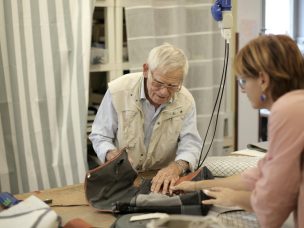Nearly 1 in 5 Americans live in rural areas. The United States Census definition of “rural” changes slightly from year to year, but, in general, rural areas are those that are sparsely populated and located far from urban centers.1 Demographic research indicates that rural-urban disparities in health care have widened in recent years, particularly among people diagnosed with cancer. Specifically, rural patients tend to have higher morbidity and mortality from cancer than urban patients, despite higher rates of cancer diagnosis among urban patients.2 These poor outcomes are thought to be caused in part by limited availability of oncology specialists, infrequent screening, and long travel times associated with rural locations. For example, more than 20% of rural Americans live more than 60 miles away from a medical oncologist.3 These patients often lack the time, transportation, and financial resources to travel to and from their oncology appointments.
Critically, rural patients are disproportionately underrepresented in cancer clinical trials, which may account for some rural-urban disparities in cancer outcomes. First, because clinical trials require and facilitate adherence to treatment protocols, trial participants may have better outcomes than patients who receive standard cancer management. Second, rural participation in trials increases the generalizability of results to these underserved areas, improving outcomes among all rural Americans—not just those who actively participated in a trial.
Even though researchers recognize the importance of increasing rural recruitment and retention in clinical trials, major barriers exist. Medical research facilities typically are located in urban areas, so many rural patients do not have convenient or feasible access to trials. People living in rural areas also may face socioeconomic challenges to participation, including travel expenses, significant time commitment, childcare costs. Lower technology use and health literacy in rural areas may further reduce the likelihood that rural cancer patients will hear about or seek out available clinical trials.4 Additionally, rural patients are more likely to be older and have more health comorbidities (such as diabetes, heart disease, or history of smoking) that may render them ineligible for cancer clinical trials.5
Recent studies emphasize the need to overcome these barriers in pursuit of uniform care and inclusion. These findings suggest that rural and urban patients who participate in clinical trials show similar survival rates, indicating that equitable access to care significantly reduces rural-urban disparities in cancer mortality.6 To improve inclusive recruitment in rural areas, researchers have assessed methods for reaching rural patients, motivating them to participate, and reducing access barriers that otherwise would prevent their inclusion. Rural patients report that financial incentives would be the most effective way to encourage trial participation, and that the most effective recruitment strategies would leverage community- and faith-based organizations to spread information about clinical trials.7
To reduce ongoing health disparities in cancer care and outcomes, clinical research must proceed with a strong focus on inclusion, representation, and equitable access to care. Rural cancer patients represent one of many underserved populations that will benefit immensely from proportionate inclusion in clinical trials.
Refeences:
1 United States Census Bureau. One in Five Americans Live in Rural Areas. (2017). Accessed from: https://www.census.gov/library/stories/2017/08/rural-america.html
2 Levit LA, Byatt L, Lyss AP, et al. (2020). Closing the cancer care gap: Three institutional approaches. JCO Oncology Practice, 16(7):422-430.
3 Konety BR, Allareddy V, Modak S, & Smith B. (2006). Mortality after major surgery for urologic cancers in specialized urology hospitals: Are they any better? Journal of Clinical Oncology, 24(13):2006-2012.
4 Davis TC & Arnold CL. (2020). Health literacy research in rural areas. Studies in Health and Technology Informatics, 269:241-247.
5 McCullough LE & Flowers CR. (2018). Identifying and addressing disparities in survival outcomes for rural patients with cancer. JAMA Open Network, 1(4):e181243.
6 Unger JM, Moseley A, & Symington B. (2018). Geographic distribution and survival outcomes for rural patients with cancer treated in clinical trials. JAMA Open Network, 1(4):e181235.
7 Friedman DB, Foster C, Bergeron CD, et al. (2015). A qualitative study of recruitment barriers, motivators, and community-based strategies for increasing clinical trials participation among rural and urban populations. American Journal of Health Promotion, 29(5):332-338.










